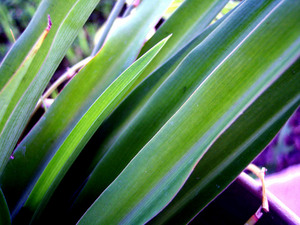The scientific method is a procedure by which scientists logically and objectively determine the answer to a question. It involves several steps, and some of the steps may be repeated during the course of a scientific investigation to gather more information or improve understanding.
Steps of the Scientific Method
1. Ask a Question- Every scientific investigation begins with a question: what the scientist wants to find out. For example, we might want to know if fertilizer makes plants grow faster.
2. Observe- This step helps to focus and design the experiment. Do some preliminary research about your topic, and find out as much information as possible about it. Continuing with our example, we might look at different types of fertilizer and what kinds of plants they are used for.
3. Form a Hypothesis- A hypothesis is a prediction, often called an “educated guess.” It is what you think the answer to the question will be, based on what you already know. The hypothesis must be testable by experimentation.
4. Test the Hypothesis by Conducting an Experiment- Design the experiment so that conditions are exactly the same except for one variable that is being tested. For example, if the question is whether fertilizer makes plants grow faster, then two sets of plants should be tested. Each should have the same soil, sunlight and amount of water. The only difference between the two sets should be the variable that is being tested: one group will get fertilizer and the other group will not.
5. Collect and Analyze Data- Carefully observe and record all of the information in a laboratory notebook or on a worksheet. Ideally, the data should be quantifiable, such as measuring the height of the plants or counting how many leaves they have. Data analysis often requires taking an average. If four plants were given fertilizer and four plants were not, then measure the height of all four and take an average. This will help to even out small variations in individual samples.
6. Draw a Conclusion- In this step, you interpret the data and make a conclusion about the outcome. Did the data support your hypothesis? If your hypothesis was not supported by the data, form a new hypothesis based on the experimental data, and repeat the experiment. Scientists often repeat experiments many times to ensure they have reproducible results.
Teaching the Scientific Method
When teaching the scientific method, post the steps and explain each one. Then have the students carry out a simple experiment in which they can practice each step. If they are not using a lab notebook, giving students a worksheet with the steps to fill out helps them to complete each step. This is especially useful for younger students. The worksheet can have each step listed, with blanks for the students to fill in. Questions on the worksheet may include:
What is the question you would like to answer?
What do you already know about this topic?
What is your hypothesis?
Describe the experiment you will be doing to test your hypothesis.
Record your data.
Analyze your data.
What is your conclusion?
Did the data support your hypothesis? Why or why not?
It is important to tell students that if the data did not support their hypothesis, it does not mean that they were wrong. The whole purpose of scientific experimentation is to learn about how things work. They have learned something new and therefore their experiment was a success.
Sources:
http://www.sciencebuddies.org/science-fair-projects/project_scientific_method.shtml


